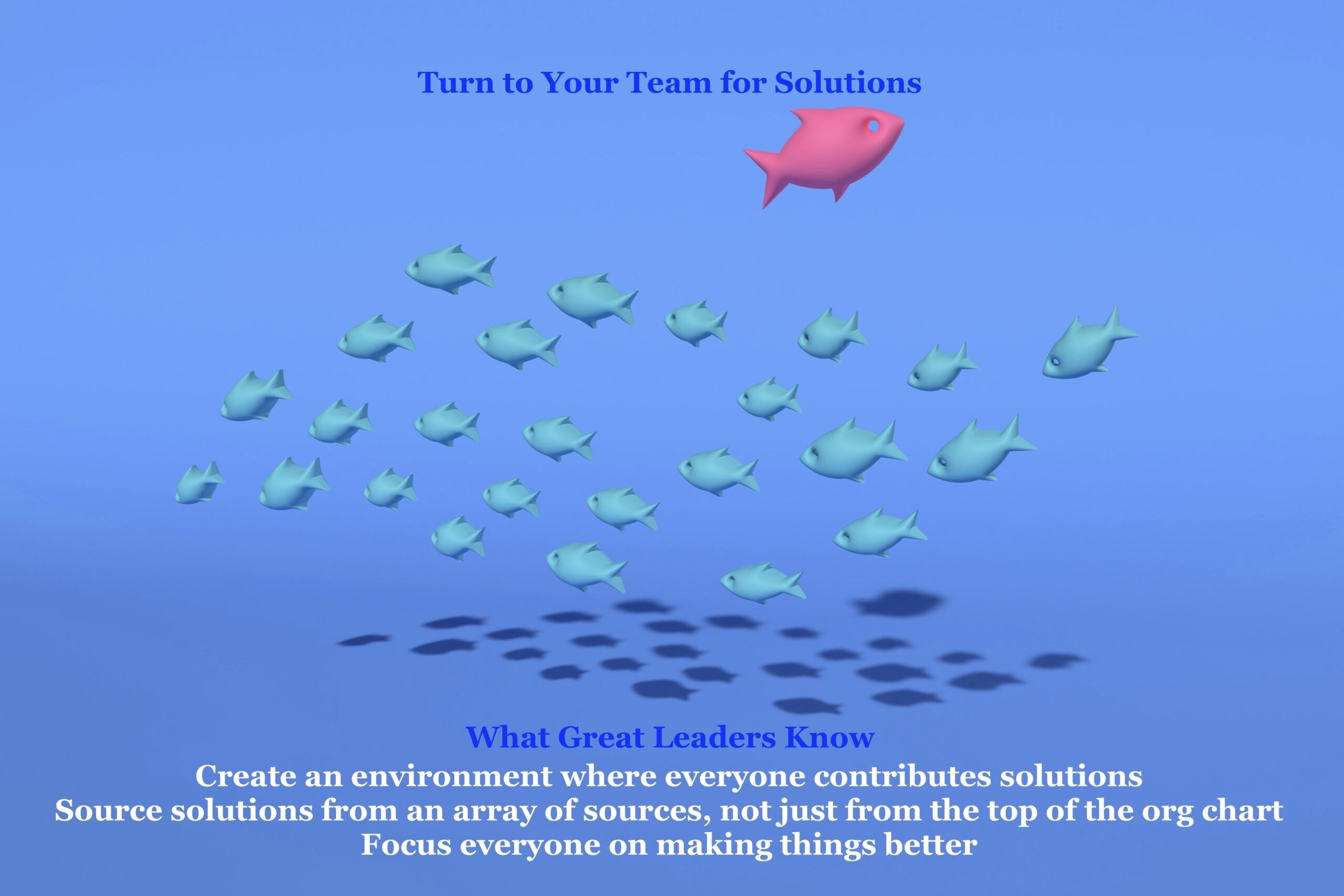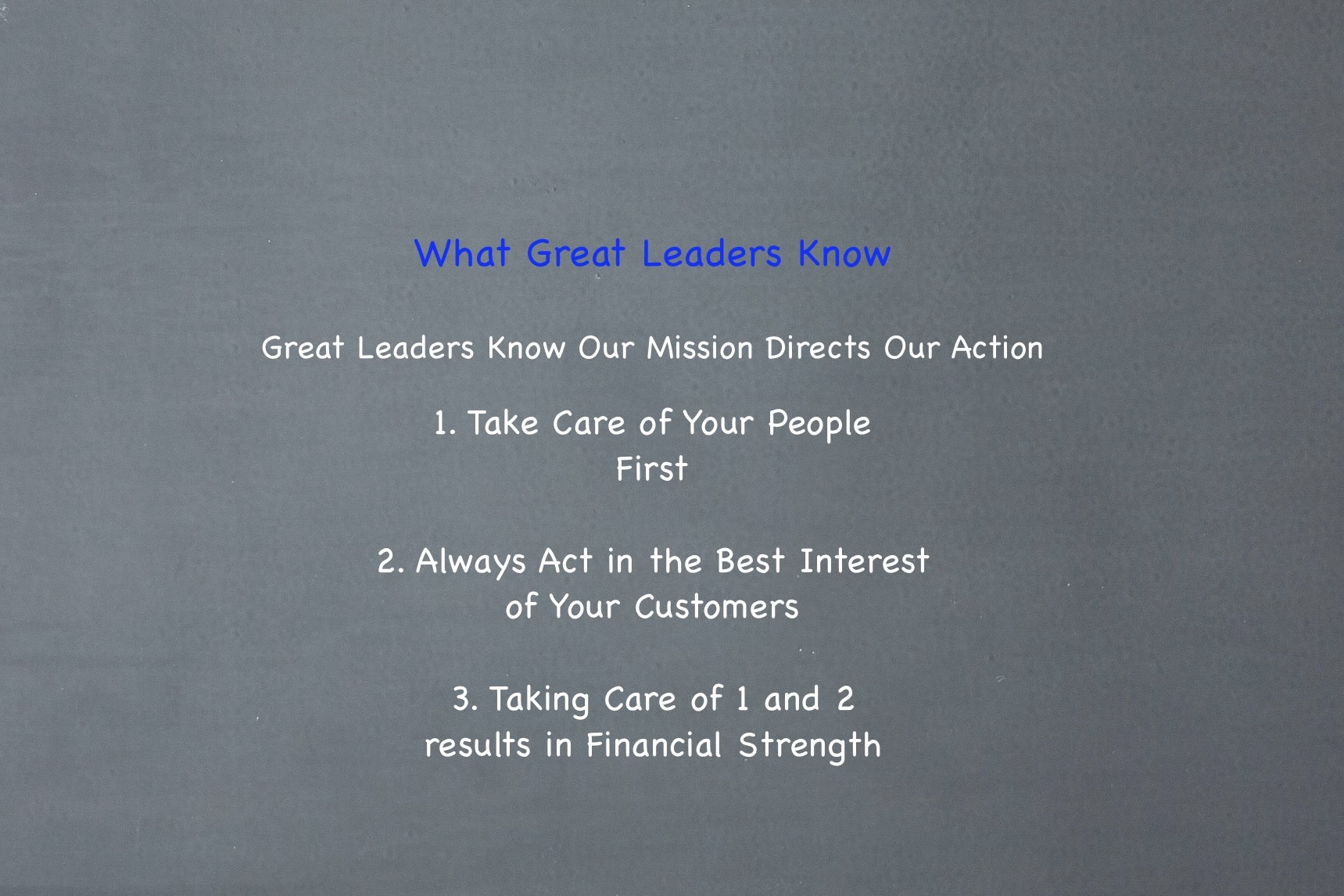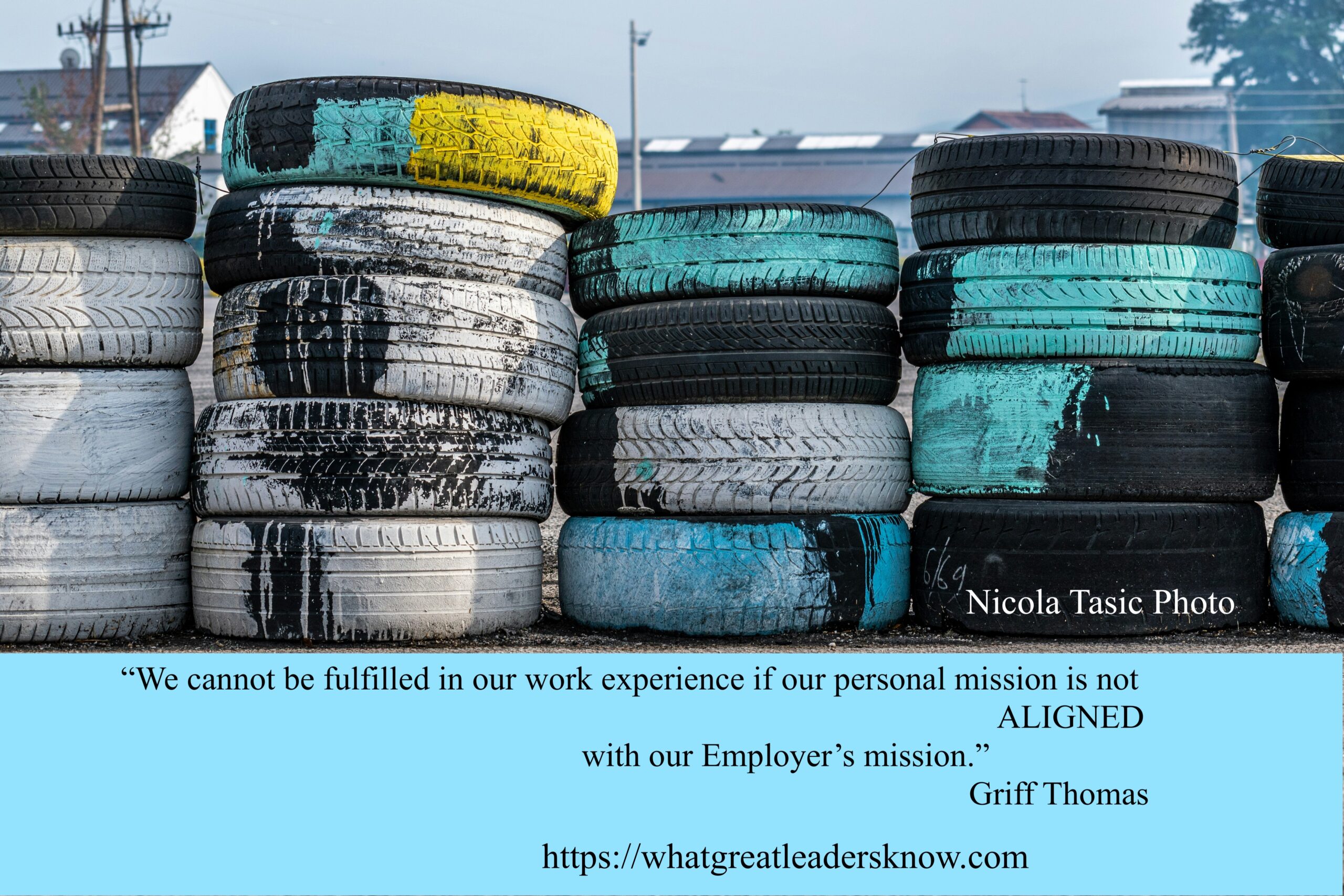Your cart is currently empty!
Tag: Manager

Turn to Your Team for Solutions
Many minds are better than one. Turn to Your Team for Solutions.
Have you ever worked at a job where every decision had to be made by the boss rather than turning to the team for solutions? Asking your team for solutions is a model for growth while single approval control is a misstep. Following the traditional model of business means yielding to the more senior leader as the expert in all circumstances. To be fair, nobody can be an expert at everything or should be expected to be.
Great Leaders know solutions, ideas, innovations come from an array of sources and their role is not to be the one and only solution provider, but the person who creates an environment where everyone has value and is depended upon to contribute to solving problems, innovation, growth.
The obstacle to including team members in decision making is the leader’s need to control. It may seem like the right thing to do is to defer to the boss, but this presents individuals from learning how to make decisions and grow.
When I learned to give problems back to my team, they generated amazing solutions.
Since they were hitting the roadblock day after day, they had a perspective I did not. I made it my goal to engage the team in problem solving. When they would ask me what to do, I asked them what they thought. If they provided a workable solution, I would let them introduce it and give them credit- “We’re going to follow Amy’s plan today.” As you can imagine, Amy’s stock rose among her peers and everyone on the team was motivated to provide the next solution. When other teams spent time gossiping and tuning out, mine were thinking about how can we make things better. Not everyone can offer a workable solution, but that’s not important, engaging them is important.
I remember asking my front line team how we can reduce supply costs. They knew exactly what needed to happen and we reduced supply costs by 20%. They were excited to watch our progress! I was too!
By turning to your team for solutions, employee engagement, retention rates and operational performance results will all improve, leaving the controllers in your wake.
What Great Leaders Know
Create an environment where everyone contributes solutions
Source solutions from an array of sources, not just from the top of the org chart
Focus everyone on making things better
Links
https://whatgreatleadersknow.com/
https://hbr.org/2023/03/how-to-equip-your-team-to-problem-solve-without-you

OUR MISSION DIRECTS OUR ACTION
In the first minute of my first class in business school at Westminster College, it became apparent. The professor wrote on the board, the purpose of business is to ______ _____. The rest of the class answered in unison “make money” and received a positive nod from the professor. I said “serve people”, earning me a roomful of skeptical looks.
After class, I approached the professor. “The goal of business is to provide something of value to a consumer. Above all, satisfactory service must happen or the business isn’t going to be paid (or stay paid). Service comes first. ” He stood his ground. Looking back, what I wish I had said was-
Different people have different missions, our missions direct our actions.
Great Leaders recognize their team members as their most important customers. Great service only happens when employees willingly give it because they feel satisfied. As a result, their positive actions toward customers are the manifestation. It’s clear that our mission directs our actions in our professional conduct. Ethical choices are always directed by their impact on people.
I stood alone in my MBA Business Ethics class arguing on behalf of the consumer. My classmates argued for business profits. In one memorable case, a manufacturer refused voluntary recall on cars they knew exploded during collisions because of the additional expense. Yet, my classmates also said they would not buy the exploding car for themselves. If we object to how we are treated as customers, we should not treat our customers the same way!
Mission directing Actions example
In 1982, tainted bottles of Tylenol resulted in several deaths. The poisoning happened after the bottles were on shelves and did not directly involve the manufacturer Johnson and Johnson. J&J spent $20 million to recall their product! Was this the right decision? Yes! J&J’s decision to recall Tylenol, and introduce tamper resistant caplets and containers, set a new standard for product safety, benefitting millions of customers. Tylenol increased their pain reliever market share from 35 to 37%. Today, Tylenol is an industry leader with a 37% market share. History has proven Johnson and Johnson made a wise decision in taking care of customers first.
Great Leaders Know Our Mission Directs Our Action
1. Take care of your people first
2. Always Act in the best interest of your customers
3. Taking care of number 1 and number 2 results in Financial Strength
Links
https://whatgreatleadersknow.com/
https://en.wikipedia.org/wiki/Chicago_Tylenol_murders
https://www.nytimes.com/1999/07/10/us/4.9-billion-jury-verdict-in-gm-fuel-tank-case.html

Great Leadership- Alignment and Mission
We cannot be fulfilled in our work experience if our personal mission is not aligned with our organization’s mission.
When a vehicle is out of alignment, the tires wear out quickly and unevenly delivering an unpleasant ride. Mis-alignment can also damage the breaks, steering and frame. As more time passes without resolving the issue, the more damage is done, the more costly the fix. This is true for Wheels, Alignment and Mission in a professional context as well.
When I have parted ways with employers it has always been because my personal mission no longer aligned with the organization’s mission. Either my personal mission had evolved or I realized the company no longer stood for what I supported. These moments are clear indicators when the focus on Wheels, Alignment and Mission is absent.
I encourage everyone I work with to sit down and write their personal mission statement so they have a North Star. Next, to write down their employer’s mission statement. Compare them. Do they align? Does working for the employer help them achieve their personal mission? How do the leaders of their employer behave in relation to the mission? Is the mission an afterthought, a slogan? Alignment in Wheels, Alignment and Mission is key.
If your employer’s mission or the way they pursue it, doesn’t align with your personal mission, find an organization that does as soon as you can. You will be much happier and less worn down by the journey. Addressing Wheels, Alignment and Mission can help in finding fulfillment in your career.
What Great Leaders Know
Their personal mission
A personal mission must align with our employer’s mission
Missions with conflicting purposes result in unavoidable strain and waste
Links
https://www.firestonecompleteautocare.com/blog/alignment/is-it-time-for-a-wheel-alignment/